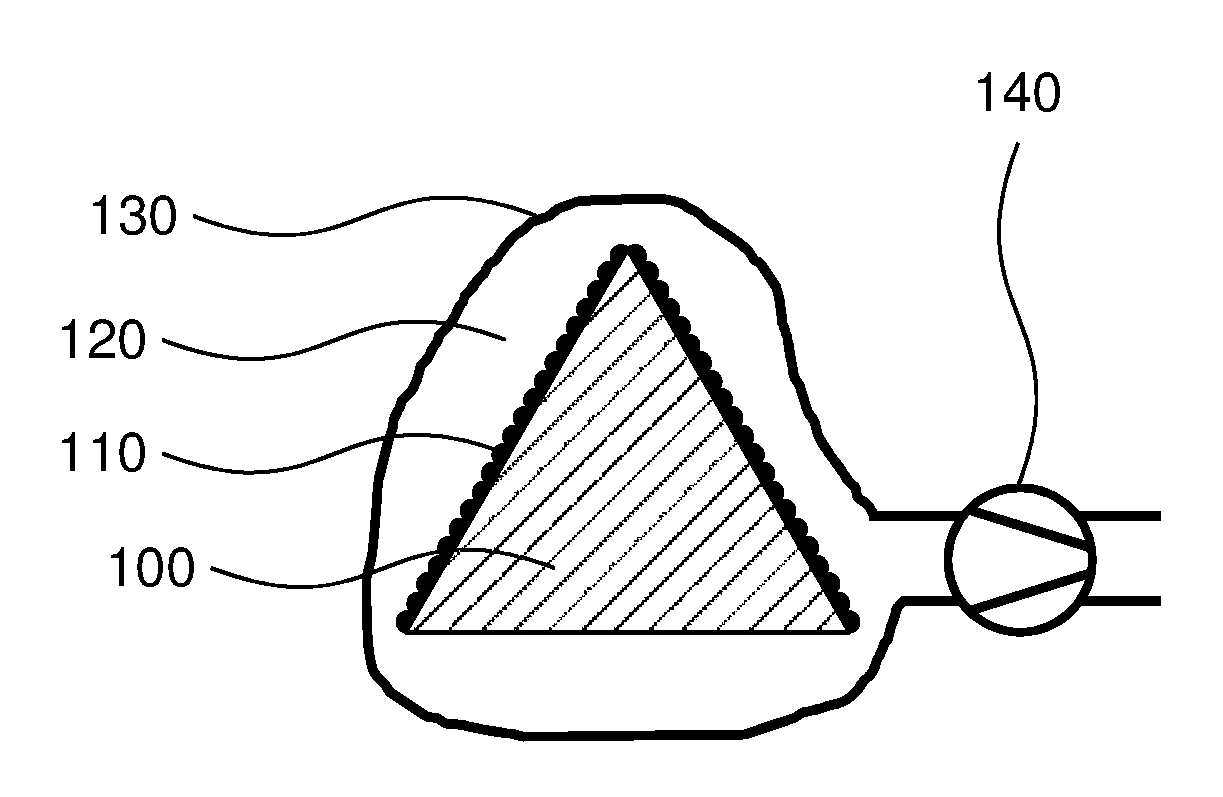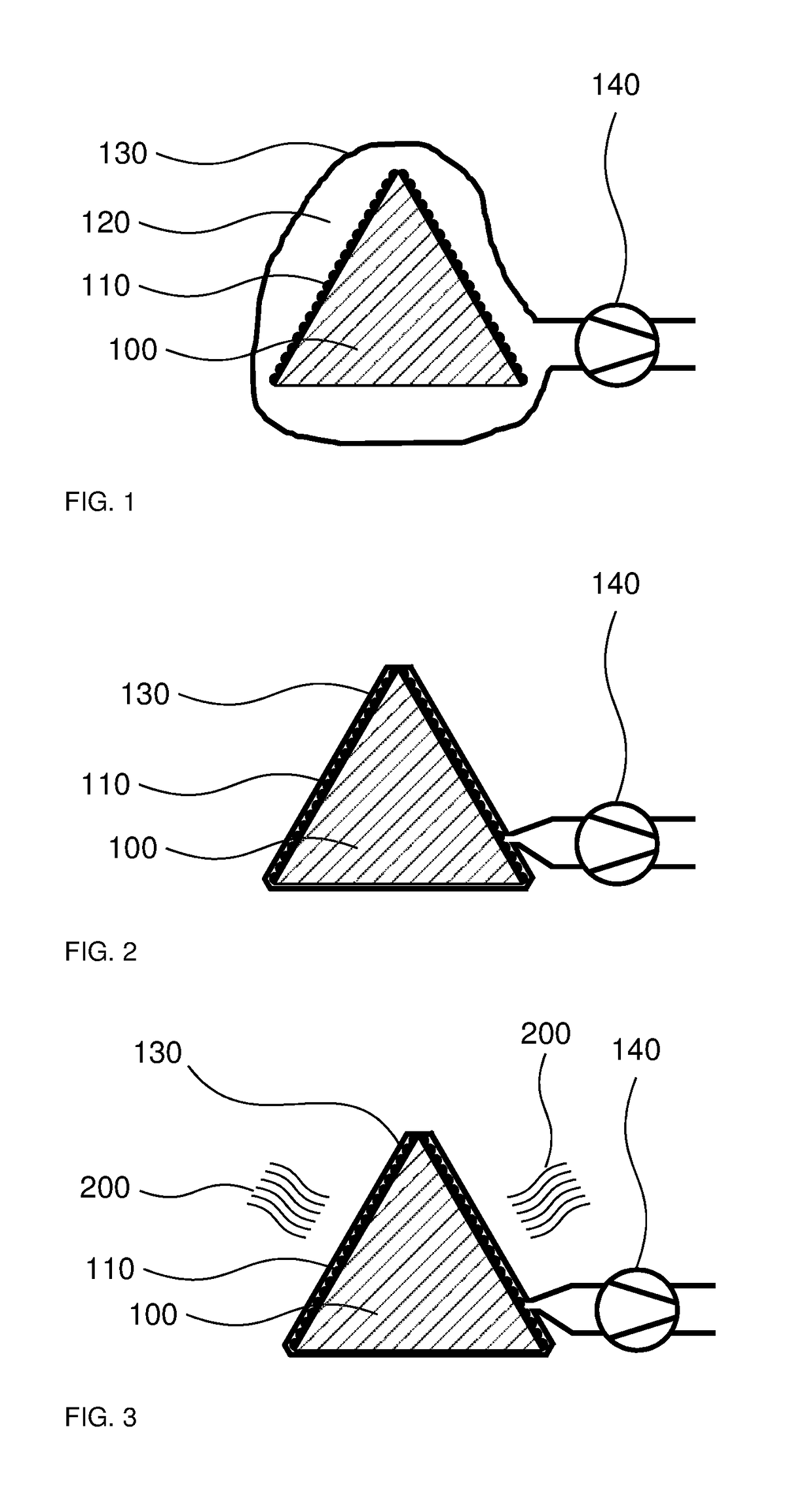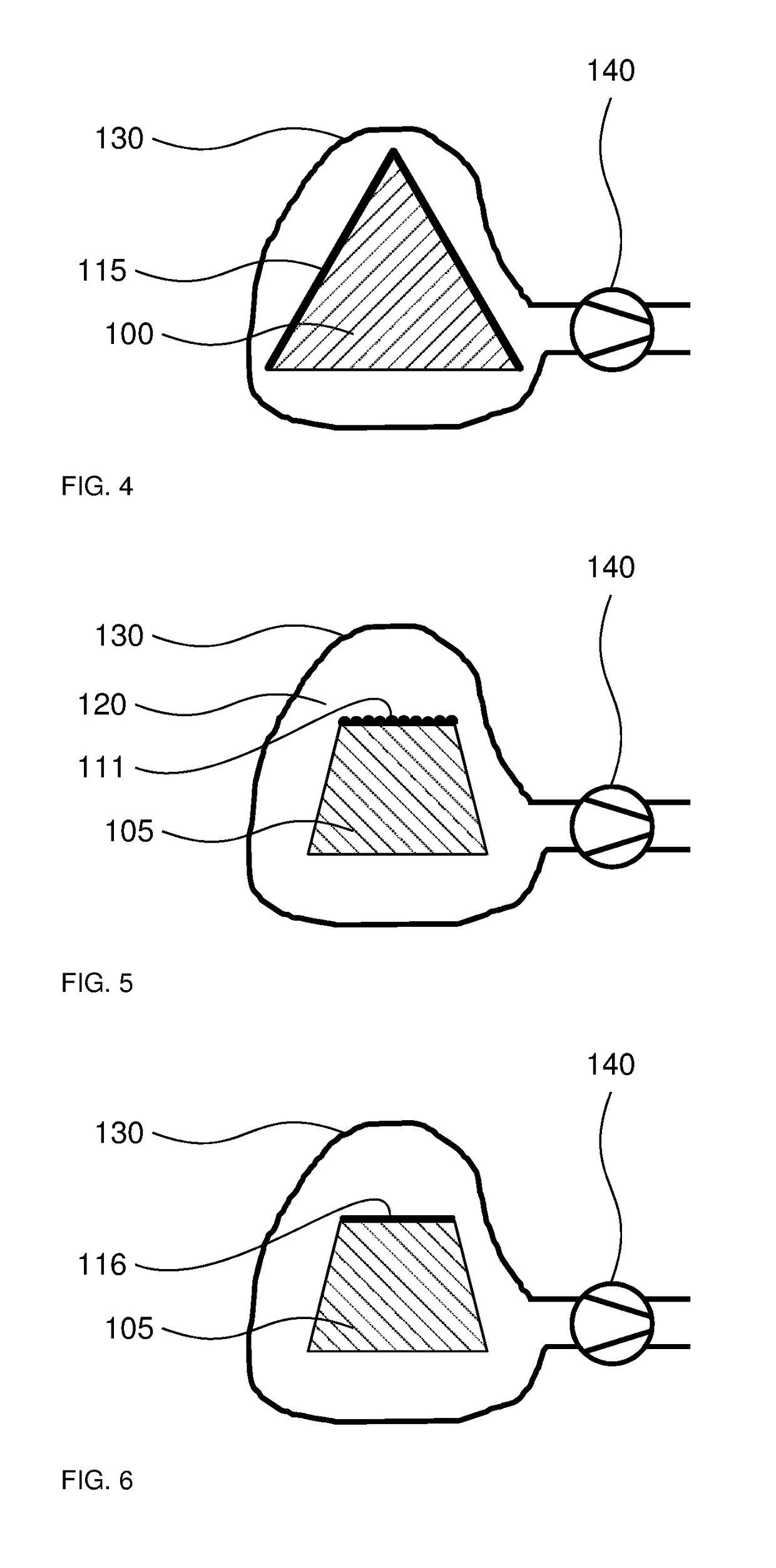Method of treating at least part of the surface of a 3d-printed article
a 3d printing and surface treatment technology, applied in the direction of additive manufacturing processes, manufacturing tools, additive manufacturing with solid and fluid, etc., can solve the problems of uneven surface of 3d printing articles, undesirable mechanical aftertreatment (including sandblasting), uneven surface of additive manufacturing articles, etc., to achieve the effect of improving the surface presentation of additively manufactured articles
- Summary
- Abstract
- Description
- Claims
- Application Information
AI Technical Summary
Benefits of technology
Problems solved by technology
Method used
Image
Examples
example
[0131]The invention is also elucidated by the example which follows, but without being restricted thereto.
[0132]Specimens were produced by means of an FDM method from the construction material DESMOPAN 3690 AU, a polyester-based thermoplastic polyurethane available from Covestro AG, Leverkusen, Germany, which has a Shore hardness (DIN ISO 7619-1) of 90-94 Shore A and is at a temperature TG′ at which the storage modulus G′ (determined by dynamic-mechanical analysis according to ISO 6721 at a shear rate of 1 / s) is 10 MPa, of 118° C. The temperature figures reported have a method-related error of ±2° C., since the process is a dynamic process in which it was not possible to read off the temperature more accurately for the given storage modulus of 10 MPa.
[0133]In a vacuum lamination system with a heatable, smooth metal base, the specimens were covered with a covering film integrated into the lid of the system, and a vacuum of 500 mbar was applied within the evacuable volume formed by th...
PUM
| Property | Measurement | Unit |
|---|---|---|
| storage modulus G' | aaaaa | aaaaa |
| pressure | aaaaa | aaaaa |
| pressure | aaaaa | aaaaa |
Abstract
Description
Claims
Application Information
 Login to View More
Login to View More - R&D
- Intellectual Property
- Life Sciences
- Materials
- Tech Scout
- Unparalleled Data Quality
- Higher Quality Content
- 60% Fewer Hallucinations
Browse by: Latest US Patents, China's latest patents, Technical Efficacy Thesaurus, Application Domain, Technology Topic, Popular Technical Reports.
© 2025 PatSnap. All rights reserved.Legal|Privacy policy|Modern Slavery Act Transparency Statement|Sitemap|About US| Contact US: help@patsnap.com



